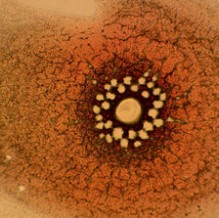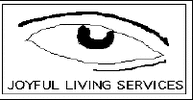Live and Dry Blood Cell Analyses
"Live and Dry Blood Analysis Can Be Utilized To Achieve Optimum Health In The Body"
What Can Live & Dry Blood Tell Me About My Body?

“Allows for a deeper understanding of what may be happening within the body”
Live and Dry Blood Analysis can identify:
Live and Dry Blood Analysis can identify:
- Specific nutrients that may be lacking
- Can help locate inflammation in the body
- Give indications of stress in certain organs
- Assess levels of inflammation, oxidation or toxicity.
- Can help determine digestive health of the microbiome
- Assess the lymphatic burden and protein metabolism
- Can indicate the general state of health in the tissues of the body
What Is Live Blood Analysis

“A drop of blood shows the health of the body and if it is functioning properly”
In Live Blood Analysis (also known as Live Blood Microscopy or Live Blood Cell Analysis) a drop of fresh blood is viewed in its live state. This is without oxidation, stains, and is preserved free from chemicals, under a microscope.
The drop of blood is then magnified to 1000x magnification to view the condition of the blood cells and the plasma to reveal any other content of the blood that may show imbalance.
In Live Blood Analysis (also known as Live Blood Microscopy or Live Blood Cell Analysis) a drop of fresh blood is viewed in its live state. This is without oxidation, stains, and is preserved free from chemicals, under a microscope.
The drop of blood is then magnified to 1000x magnification to view the condition of the blood cells and the plasma to reveal any other content of the blood that may show imbalance.
What is Dry Blood Analysis?
Dry blood analysis (also known as the Oxidative Stress Test or Dried Blood Layer Analysis) is when a drop of blood is left to clot and dry on a slide, leaving patterns that are indicative of various imbalances such as metal toxicity or vitamin and mineral deficiencies.
How Does Live & Dry Blood Analysis Work?

Blood is the most complex human biological fluid. It contains a huge variety of molecules, ions and cells; we can tell a lot about our health from what is in our blood and the way it behaves.
As medical science has progressed it seems we have discovered even more that the blood can offer and this is why it is so frequently tested by medical professionals to monitor health.
When blood dries, it leaves behind white spaces that resemble a pattern that is recognizable as a diseased state. This state all depends on how the body is functioning. With these patterns we are able to see what is happening in the body.
How the blood dries and where it dries can help reveal to us what we can do to help you find your optimum health!
As medical science has progressed it seems we have discovered even more that the blood can offer and this is why it is so frequently tested by medical professionals to monitor health.
When blood dries, it leaves behind white spaces that resemble a pattern that is recognizable as a diseased state. This state all depends on how the body is functioning. With these patterns we are able to see what is happening in the body.
How the blood dries and where it dries can help reveal to us what we can do to help you find your optimum health!
What is Dry blood Analysis Based On?

Live and Dry blood analysis is considered a holistic approach to blood testing. It is a method of health screening that has both new scientific as well as theoretical research.
The core of our approach to Dry Blood Analysis is based on:
The core of our approach to Dry Blood Analysis is based on:
- The ROTS theory of disease which states that free radical damage, oxidative stress and inflammation are the cause and by-product of all disease processes.
- The understanding that ROTS by-products circulate in the blood and affect the clotting cascade.
- The fluid dynamics of a drying drop of biological fluid – the blood.The effect that the presence of various toxic elements that circulate within the blood can have on the dry blood patterns
History of Live & Dry Blood

Emanuel Goldberger, 1939
Originally Dry Blood Analysis was developed as a simple, quick health assessment of very sick patients that could be performed at the bedside. It was a solution to the difficulty of extracting enough blood from very sick patients in order to run tests. It was developed in 1939 by a New York Doctor called Emanuel Goldberger and he called it a Blood Film Diagnostic Test.
The test involved puncturing a patient’s finger and placing the blood on the surface of the glass slide. This was left to dry for 20 minutes and once dry, the blood would produce distinct patterns depending on the contents & the condition of the patient.
Dr. Bolen, 1942
This test was further developed in 1942 by Dr. Bolen and was used as a screening tool for cancer. The test was not as specific as this; it could detect the presence of any chronic disease - not just cancer - that would cause the oxidation and breakdown of tissue, including all inflammatory processes.
Bradford research institute, 1979
The Bradford Research Institute determined what was causing the distinctive patterns that appeared in the dry blood layers. They Proposed a theory called - The Reactive Oxygen Toxic Species Theory (ROTS) of Degenerative Disease - which mapped the blood’s highly complex processes which interrupted this delicate homeostasis.
Originally Dry Blood Analysis was developed as a simple, quick health assessment of very sick patients that could be performed at the bedside. It was a solution to the difficulty of extracting enough blood from very sick patients in order to run tests. It was developed in 1939 by a New York Doctor called Emanuel Goldberger and he called it a Blood Film Diagnostic Test.
The test involved puncturing a patient’s finger and placing the blood on the surface of the glass slide. This was left to dry for 20 minutes and once dry, the blood would produce distinct patterns depending on the contents & the condition of the patient.
Dr. Bolen, 1942
This test was further developed in 1942 by Dr. Bolen and was used as a screening tool for cancer. The test was not as specific as this; it could detect the presence of any chronic disease - not just cancer - that would cause the oxidation and breakdown of tissue, including all inflammatory processes.
Bradford research institute, 1979
The Bradford Research Institute determined what was causing the distinctive patterns that appeared in the dry blood layers. They Proposed a theory called - The Reactive Oxygen Toxic Species Theory (ROTS) of Degenerative Disease - which mapped the blood’s highly complex processes which interrupted this delicate homeostasis.
How Do I Make An Appointment?
Contact us at 530-878-1119 or send an e-mail to [email protected] to schedule your appointment or fill out the form below.

Live Blood Analysis
SAVE $20 for the rest of July on our Live and Dry Blood Cell Analyses
Live Blood Analysis normally is $100. It's $80 for the rest of July.
Dry Blood Analysis is $50.
Pick a day and time below and let me know when you would like to come in for a live and/or dry blood cell analysis:
July 18th - 10-5
July 19th - 10-4
July 21st - 10-5
July 24th - 10-3
July 25th - 11-3
July 26th - 10-4
July 27th - 11-4
July 28th - 10-3
Appointments last about 45 minutes.
For more information on what you can learn go to:
https://www.joyfullivingservices.com/live-blood-cell-analyses.html
$100.00
$80.00








